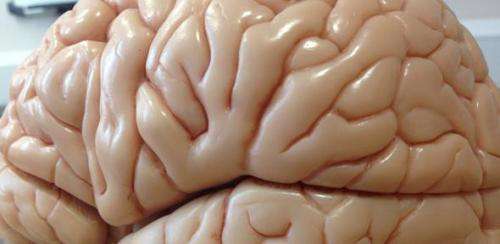Lifelong learning and the plastic brain

Our brains are plastic. They continually remould neural connections as we learn, experience and adapt. Now researchers are asking if new understanding of these processes can help us train our brains.
When a group of experimental psychologists moved into their new lab space in Cambridge earlier this year, they took a somewhat unconventional approach to refurbishing their tea room: they had the walls tiled with the Café Wall Illusion.
The illusion, so-named after it was spotted on the wall of a Bristol café in the 1970s, is a much-debated geometrical trick of the eye and brain in which perfectly parallel lines of black and white tiles appear wedge-shaped and sloped.
It's also an excellent demonstration of how the brain interprets the world in a way that moves beyond what the input is from the eye, as one of the experimental psychologists, Professor Zoe Kourtzi, explained. "In interpreting the world around us, our brains are challenged by a plethora of information. The brain is thought to integrate information from multiple sources and solve the puzzle of perception by taking into account not only the signals registered by the sensory organs but also their context in space and time.
"In the Café Wall Illusion, the brain takes into account the surrounding tiles, but it also relies on our previous knowledge acquired through training and experience when interpreting a new situation."
From the day we are born, neurons in the brain start to make connections that combine what we can see, hear, taste, touch and smell with our experiences and memories. Neuroscientists refer to the brain's 'plasticity' in explaining this ability to restructure and learn new things, continually building on previous patterns of neuronal interactions.
To unravel the mechanisms that underlie how brains learn, Kourtzi's team is looking at how brains recognise objects in a cluttered scene. "This aspect is vital for successful interactions in our complex environments," she explained. "It's how we recognise a face in a crowd or a landmark during navigation."
Visual perception is also highly trainable. The brain can use previous experience of similar cues to be quicker at identifying the image from the 'noise' – the proverbial needle from the haystack.

But although neuroscientists recognise that this type of brain plasticity is fundamental to our ability to cope with continually changing settings at home, school, work and play, little is known about how we can stimulate our brain to enhance this learning process, right across the life span.
"The process of 'learning to learn' is at the core of flexible human behaviours," explained Kourtzi. "It underpins how children acquire literacy and numeracy, and how adults develop work-related skills later in life."
One of the important determinants her team has discovered is that being able to multi-task is better than being able to memorise.
"The faster learners are those who can attend to multiple things at the same time and recruit areas of the brain that are involved in attention," she explained. "Those who are slower at learning try to memorise, as we can see from greater activity in the parts of the brain connected with memory."
"So, in fact, being able to do the sort of multi-tasking required when interacting in busy environments or playing video games – which requires the processing of multiple streams of information – can improve your ability to learn."
She also finds that age doesn't matter: "what seems to matter is your strategy in life – so if older people have really good attentive abilities they can learn as fast as younger people."
This has important implications for an ageing society. In the UK, there are now more people over State Pension age than there are children. The UK's Office for National Statistics predicts that, by 2020, people over 50 will make up almost a third of the workforce and almost half of the adult population. The average life expectancy for a man in the UK will have risen from 65 years in 1951 to 91 years by 2050. Older age has become an increasingly active phase of people's lives, one in which re-training and cognitive resilience is increasingly sought after.
Kourtzi and colleagues are using functional magnetic resonance imaging to detect when areas of the brain are activated in response to a sensory input and how these circuits change with learning and experience. While at the University of Birmingham, she showed that the visual recognition abilities of young and older adults can be enhanced by training, but that the different age groups use different neural circuits to do this.
Young adults use anterior brain centres that are often used in perceptual decisions, where sensory information is evaluated for a decision to be made; older adults, by contrast, use the posterior part of the brain, which is in charge of the ability to attend and select a target from irrelevant clutter. "The clear implication of this is that training programmes need to be geared for age," said Kourtzi.
Crucially, what she also observed is that some people benefit from training more than others: "although it's well known that practice makes perfect, some people are better at learning and may benefit more from particular interventions than others. But to determine how and why, we need to go beyond biological factors, like cognition or genetics, to look at social factors: what is it about the way a particular individual has learned to approach learning in their social setting that might affect their ability to learn?"
This multidisciplinary approach to understanding learning lies at the heart of her work. She leads the European-Union-funded Adaptive Brain Computations project, which brings together behavioural scientists, computer scientists, pharmacologists and neuroscientists across eight European universities, plus industrial partners, to understand and test how learning happens.
"In our work, there's a strong element of translating our findings into practical applications, so creating training programmes that are age appropriate is our ultimate goal," she added.
"The reason we like the Café Wall Illusion so much is because tricks of visual perception tell us that the brain can see things in a different way to the input. How the brain does this is influenced by context, just as the way we interpret our environment is influenced by learning and previous experience."



















